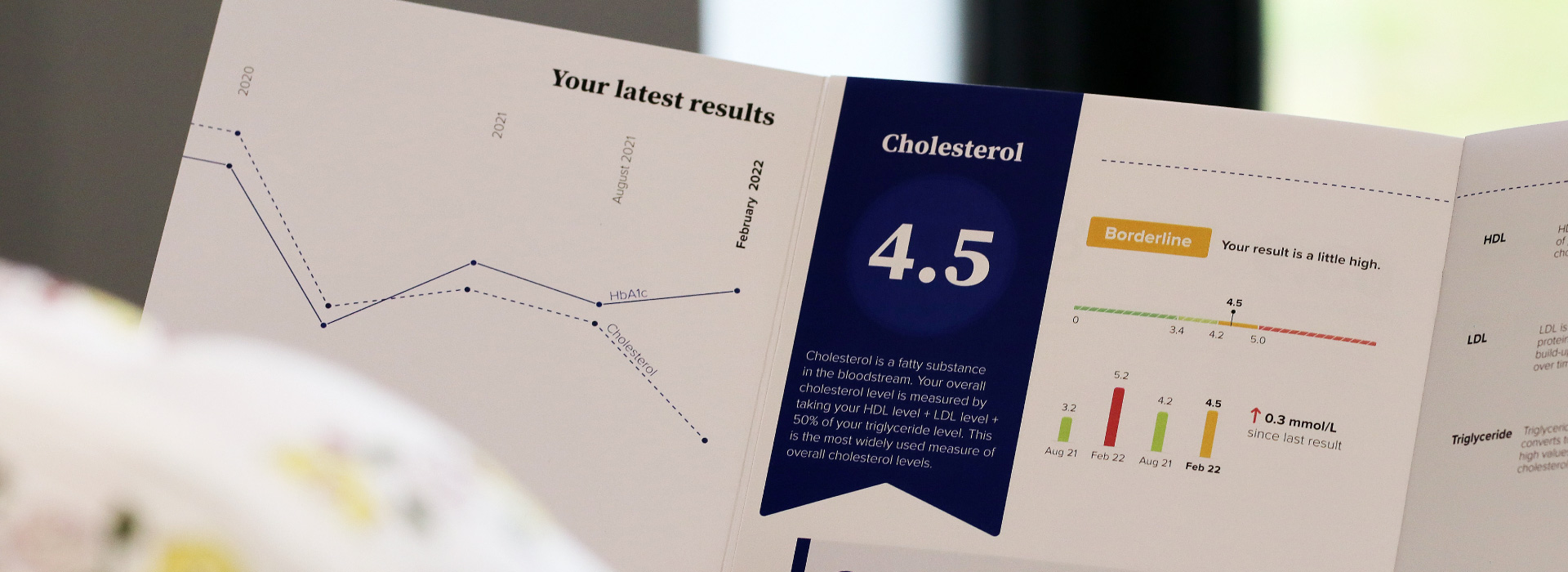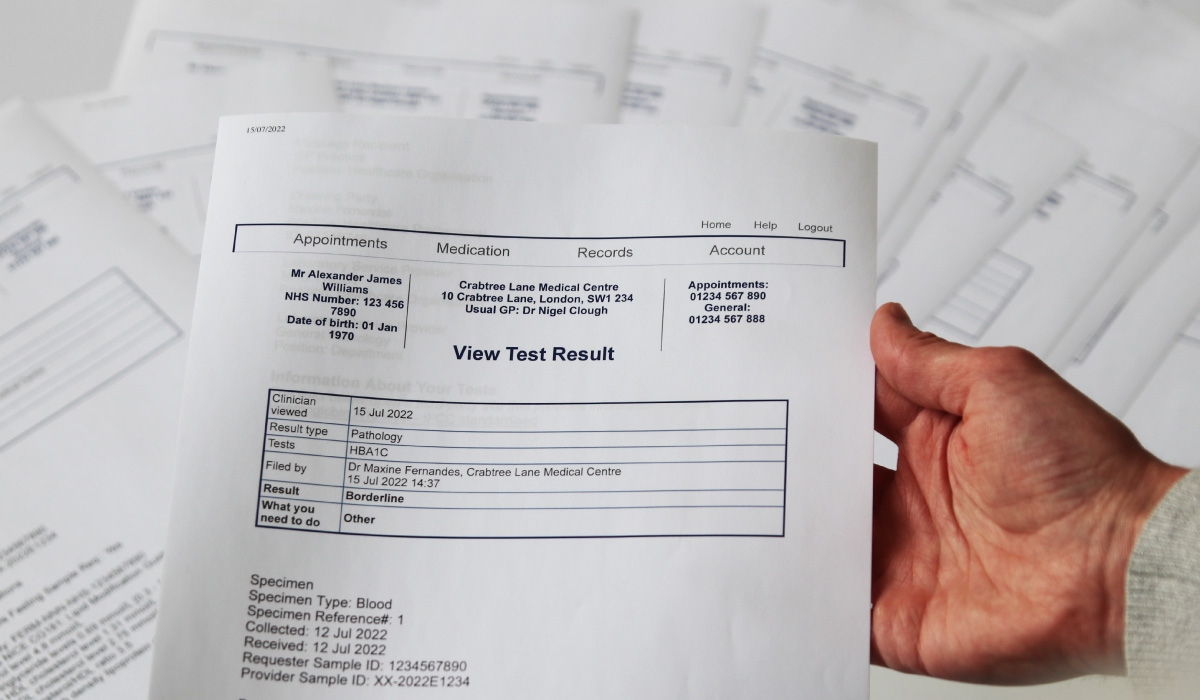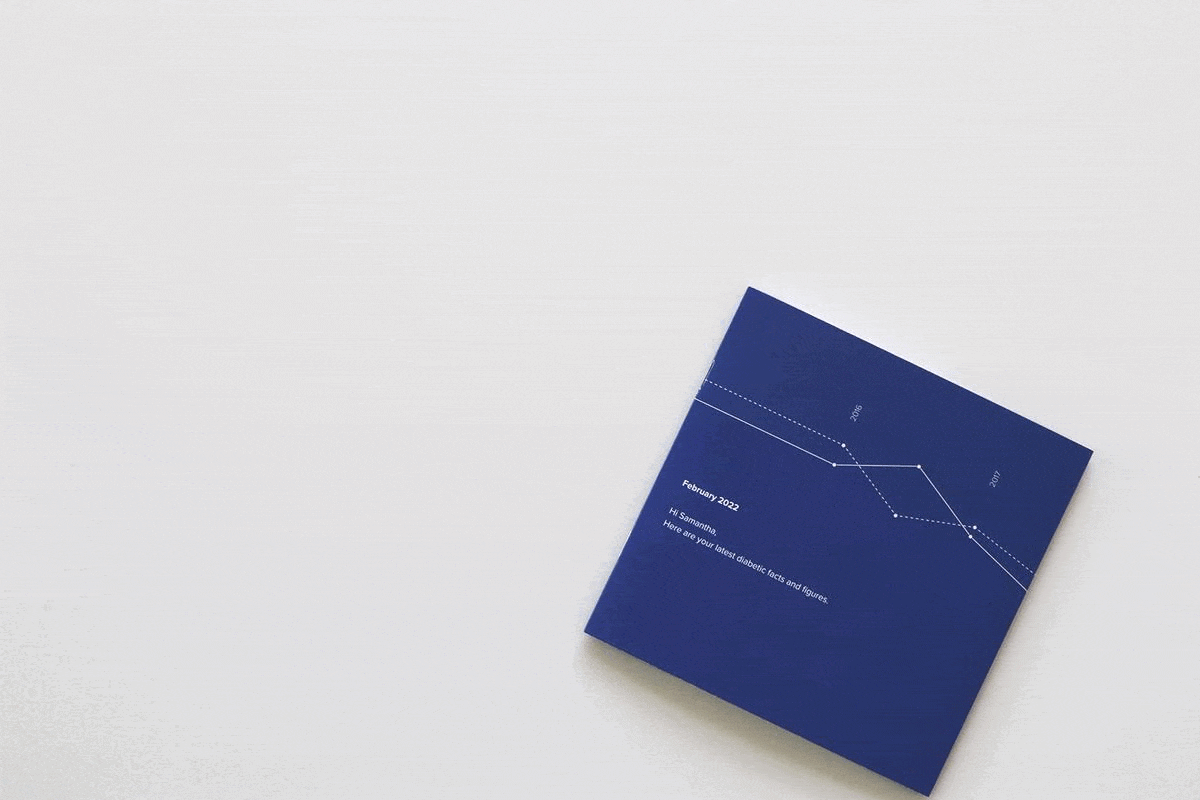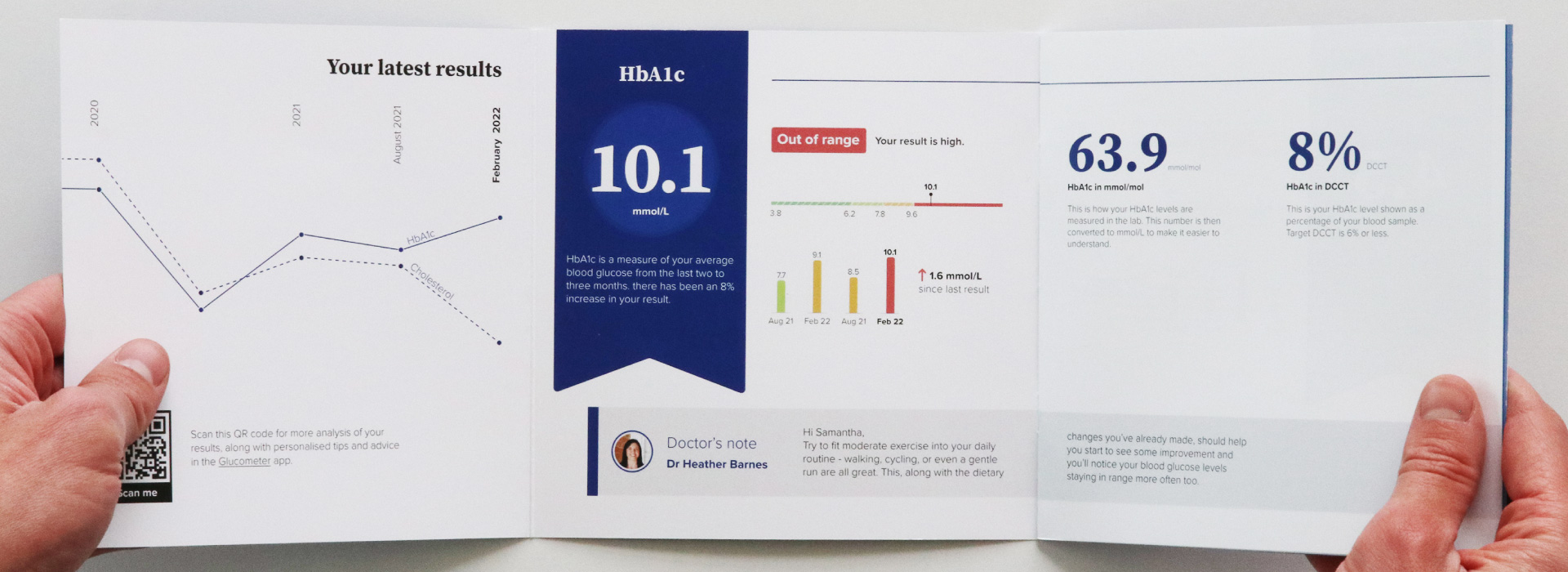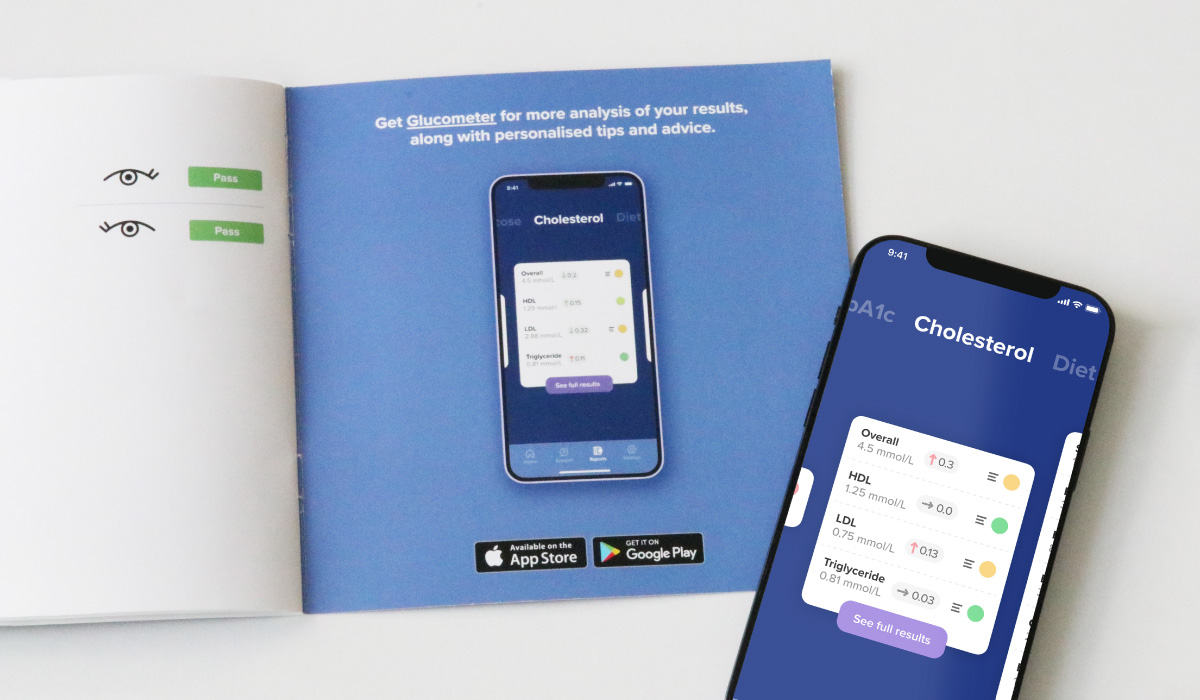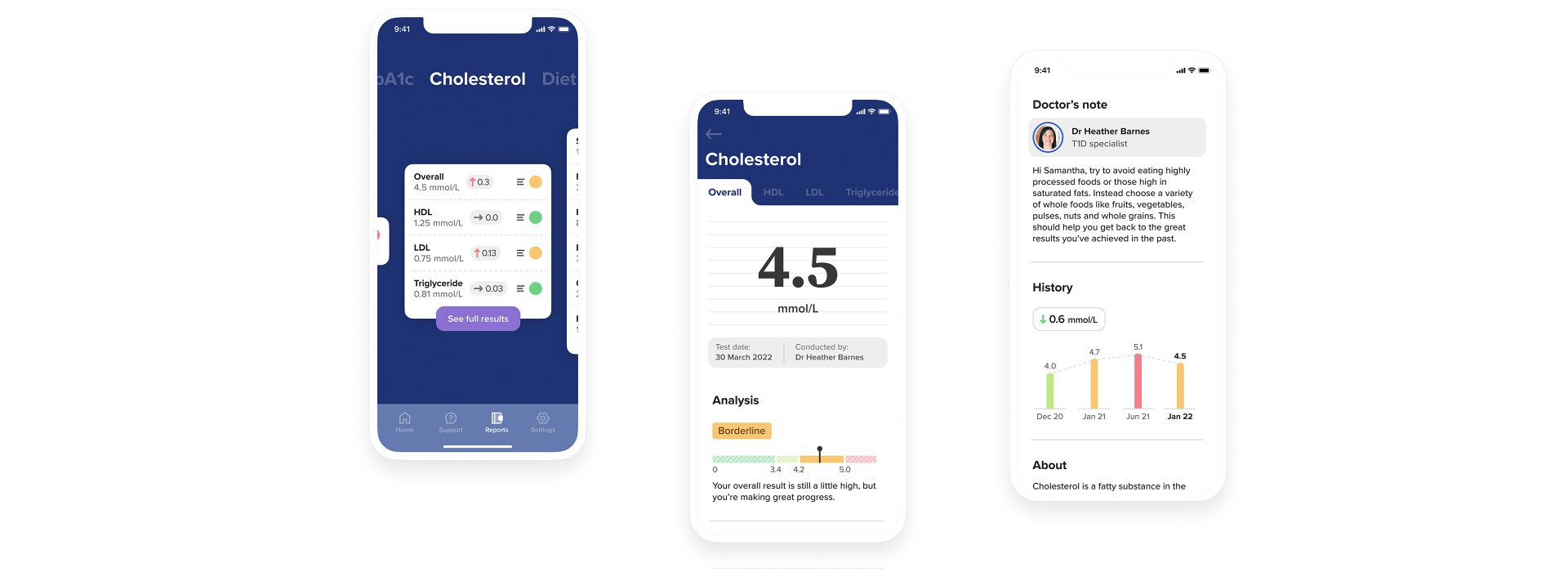Diabetes management: helping patients adopt positive behaviors
Challenge
We wanted to improve the self-management of Type 1 diabetes (T1D) by creating more accessible test results data, to educate and motivate patients with Type 1 to adopt positive behaviors and better manage their condition.
Approach
We assessed the current data solutions and digital applications offered to T1D patients to identify key challenges and opportunities. We looked for inspiration outside the medical sector, assessing the use of both digital and printed media. Our UX/UI designers and information designers worked together to explore how print and digital media could be used in combination to improve periodic (6 months) presentation of diabetes test results.
Outcome
We created a printed report which displayed key parameters to help T1D patients understand how well they were managing their condition in an easy to digest format. We developed features for a companion app which complemented the report, providing an additional level of information and dynamic results history. This helped educate, prompt and motivate behavior change when needed.
